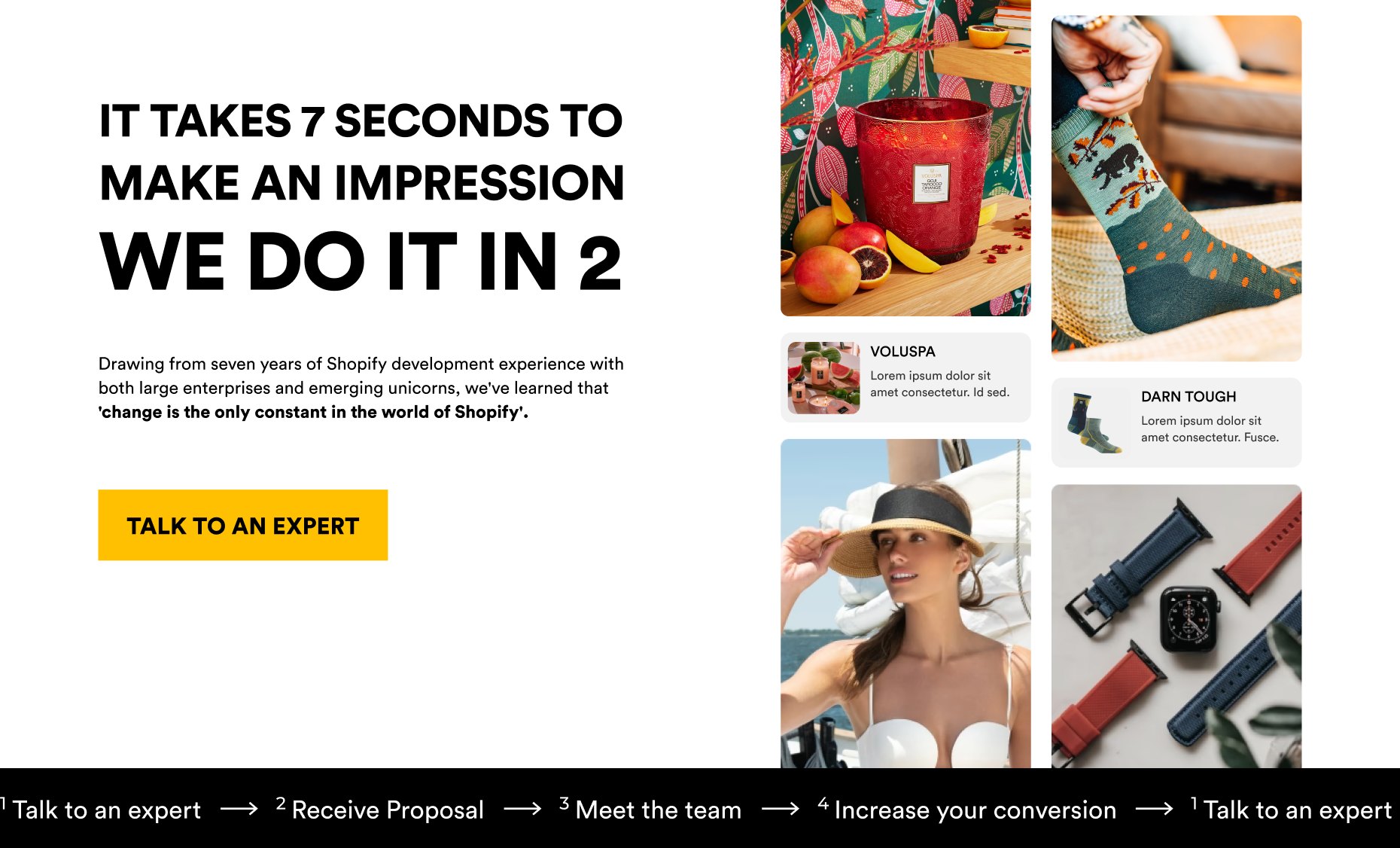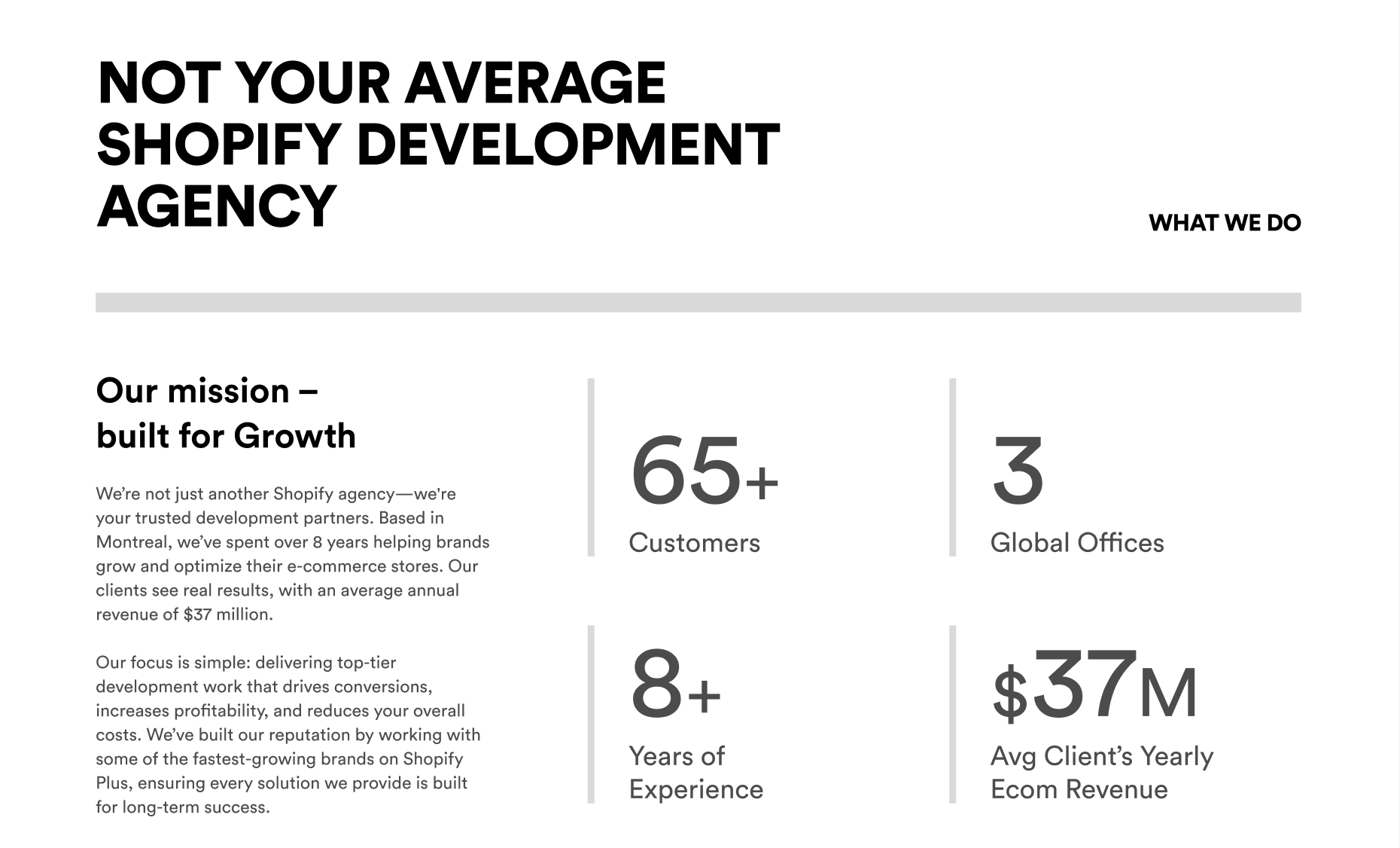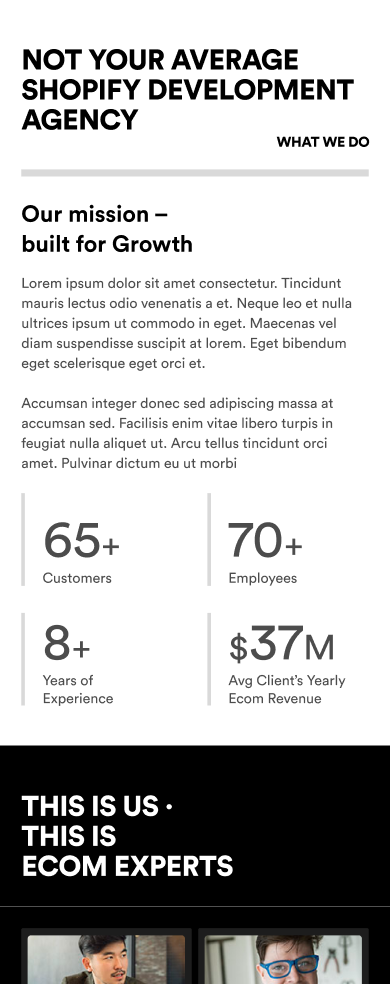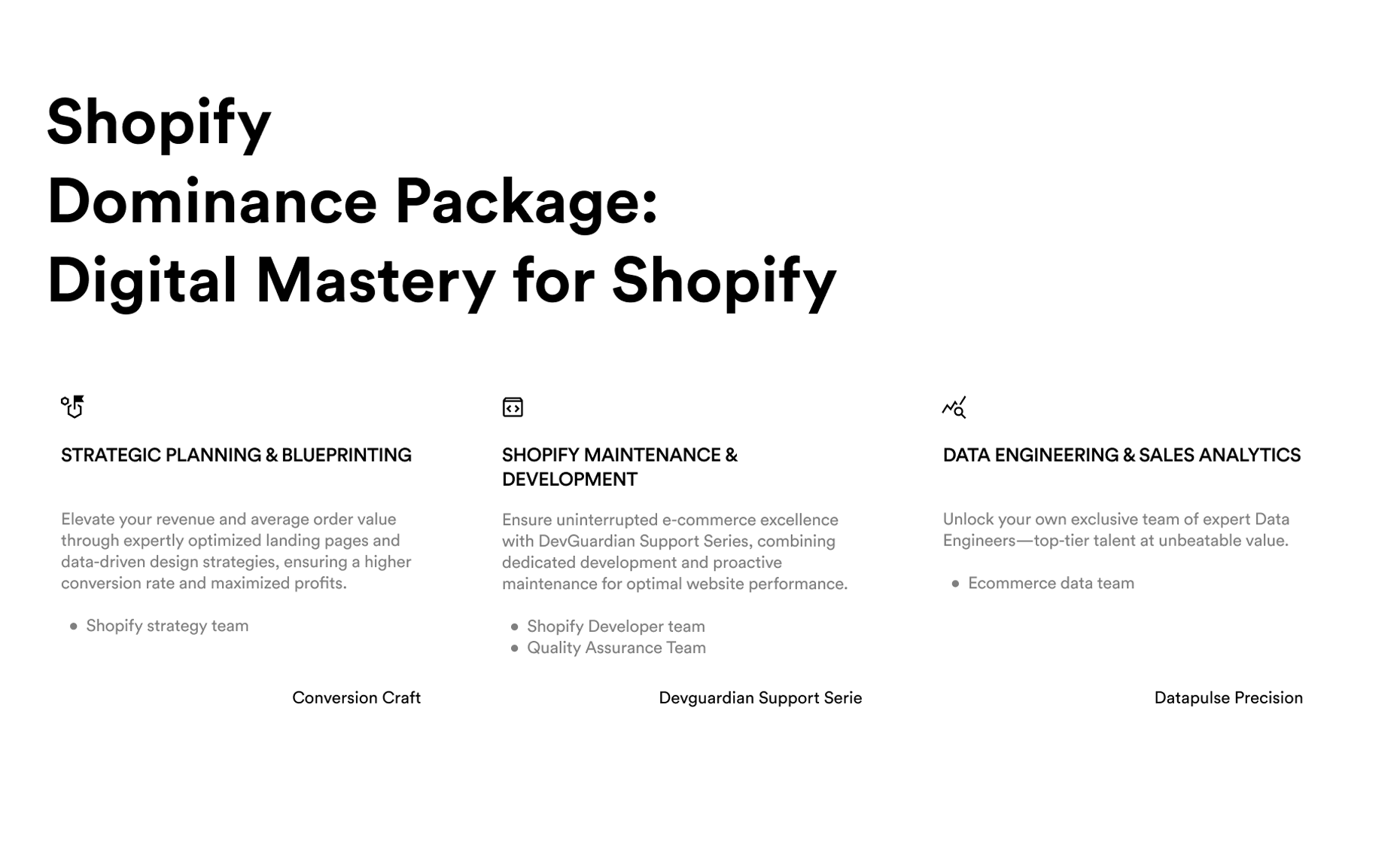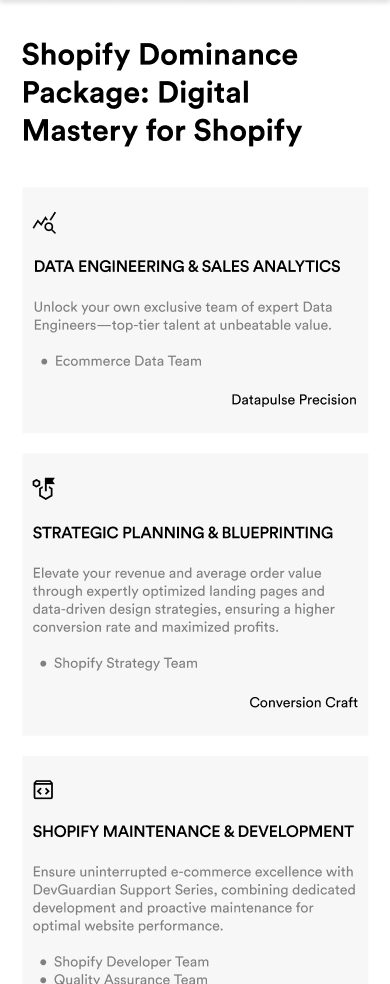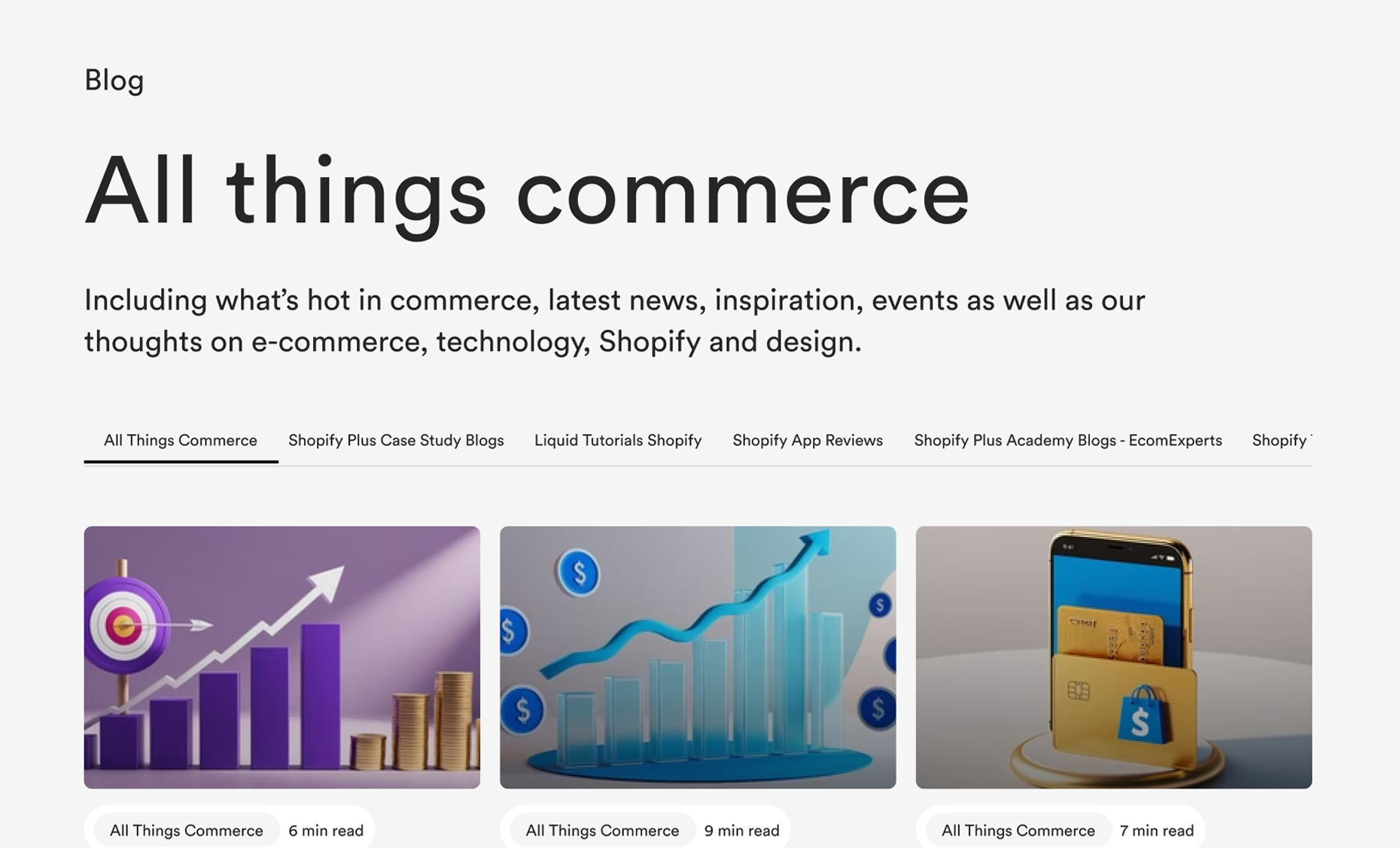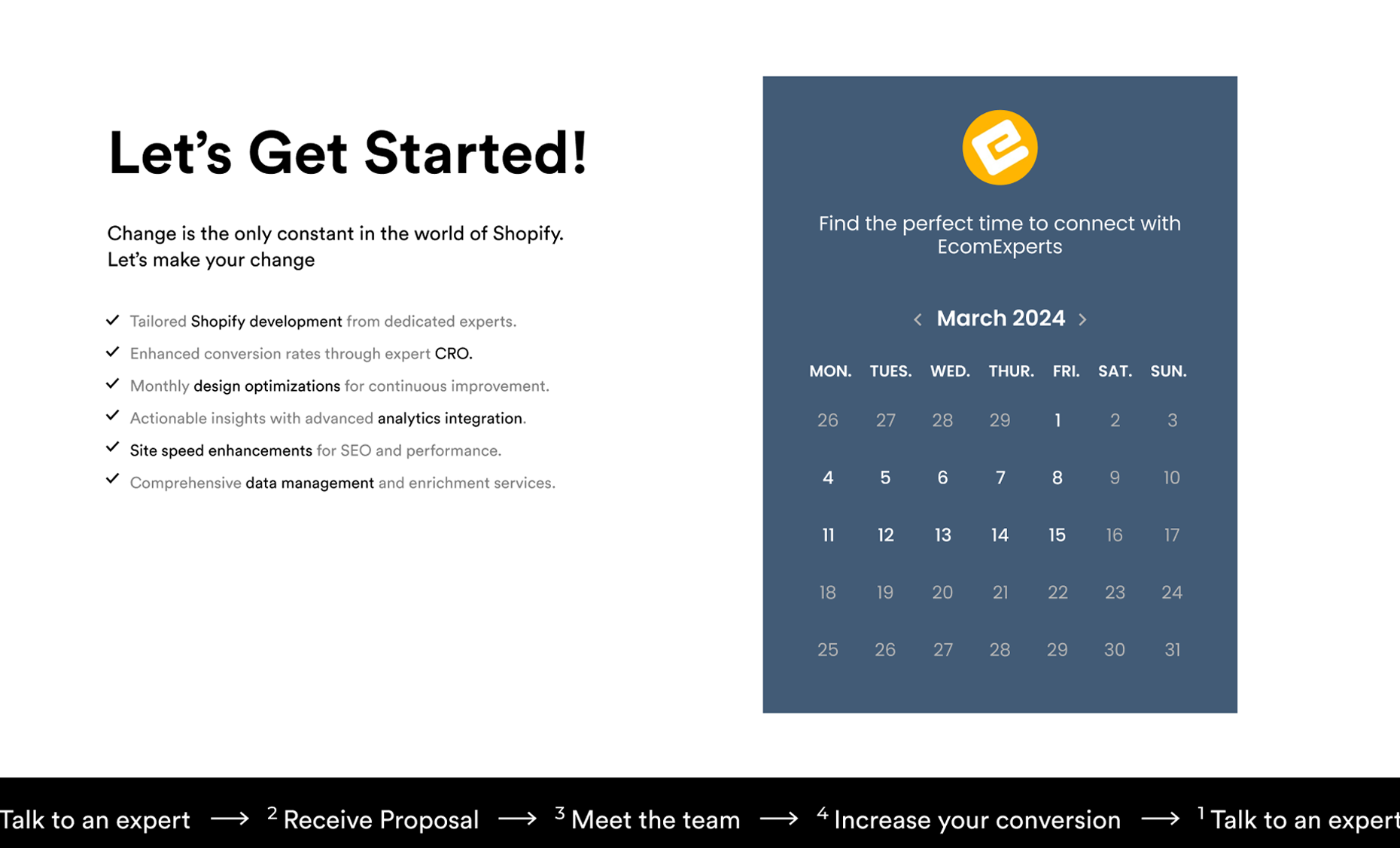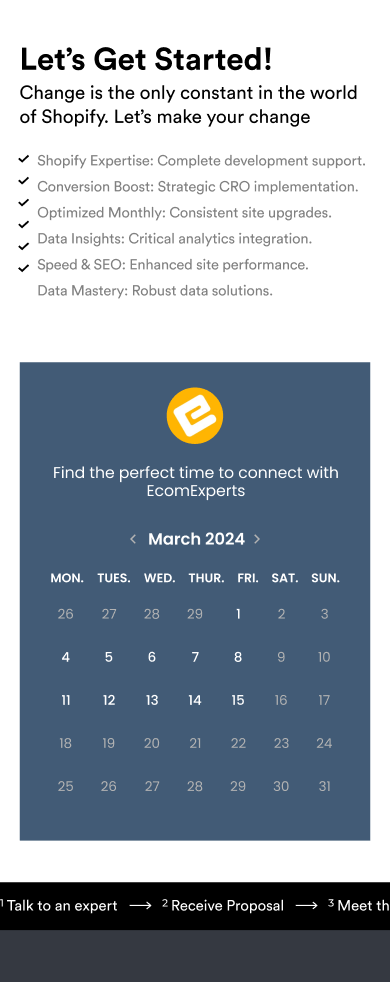Introduction
The Need for Automation in E-commerce
If you’ve been in the e-commerce game for a while, you’ve probably noticed that running an online store has become more complex than ever. We’re in 2024, and the e-commerce landscape is evolving at breakneck speed.
Customers expect more—faster service, personalized experiences, and seamless interactions across all touchpoints. This is where automation comes in.
Automation isn’t just a buzzword anymore; it’s a necessity for scaling your business while maintaining the level of service that today’s consumers demand.
Whether it’s automating repetitive tasks like order processing, managing inventory, or handling customer interactions, the right automation tools can free up your time and resources to focus on what really matters: growing your business.
Let’s talk about why automation is no longer an option but a must-have for every Shopify store aiming to thrive in 2024.
How Automation Transforms Shopify Stores in 2024
Let’s get one thing straight: automation is the engine that’s going to drive your Shopify store to the next level. In today’s hyper-competitive market, manual processes just can’t keep up.
Whether you’re dealing with a surge of orders during the holiday season or trying to manage personalized marketing campaigns, automation tools streamline these tasks, making your operations more efficient and scalable.
In 2024, automation is all about enhancing the customer experience while driving operational efficiency. By automating repetitive and time-consuming tasks, you’re not just saving time—you’re also reducing the chances of human error, which can be costly.
Automation tools help you deliver a consistent, high-quality experience to your customers, which is critical for building trust and loyalty.
For example, imagine automating your email marketing campaigns. With tools like Klaviyo, you can set up personalized email sequences that are triggered by specific customer actions.
This means you’re always reaching out to customers with the right message at the right time, without having to lift a finger. The result? Higher engagement, more conversions, and a stronger connection with your audience.
Why Every Shopify Store Needs Automation Tools
If you’re serious about scaling your Shopify store, you need to leverage automation. Why? Because automation isn’t just about doing things faster—it’s about doing them better. When you automate key aspects of your business, you’re creating a streamlined, efficient operation that can handle growth without breaking a sweat.
Think about it: as your store grows, so do the demands on your time and resources. Without automation, you’re stuck in the weeds, handling tasks that could easily be automated, which means you’re missing out on opportunities to grow your business.
Automation tools take over the mundane tasks, freeing you up to focus on strategy, innovation, and customer engagement.
In 2024, the most successful Shopify stores are the ones that have fully embraced automation. These stores are able to scale quickly, adapt to changing market conditions, and provide a superior customer experience—all because they’ve leveraged the power of automation.
So, if you’re still on the fence about whether automation is right for your Shopify store, consider this: can you afford not to automate?
Understanding Progressive Web Apps (PWAs)
What Are PWAs?
Progressive Web Apps (PWAs) are the future of the web. If you’re not familiar with the term, let’s break it down. A PWA is essentially a web application that uses modern web technologies to deliver an app-like experience right within your browser.
Unlike traditional web apps, PWAs are designed to work seamlessly on any device, regardless of the operating system. Think of them as a hybrid between a website and a mobile app—they combine the best of both worlds.
What sets PWAs apart are their key characteristics:
1. Responsiveness: PWAs are built to be responsive, meaning they adapt to any screen size or orientation, providing a seamless user experience whether you’re on a desktop, tablet, or smartphone.
2. Offline Capabilities: One of the standout features of PWAs is their ability to work offline or with poor network conditions. Thanks to service workers (a script that your browser runs in the background), PWAs can cache important files, allowing users to interact with the app even without an internet connection.
3. App-like Experience: PWAs feel like native apps, with smooth navigation and interactions. They can be installed on a user’s device directly from the browser, without the need to visit an app store.
4. Automatic Updates: Unlike traditional apps that require manual updates, PWAs are always up to date. Every time the user opens the app, they get the latest version automatically.
5. Security: PWAs are served over HTTPS, ensuring that all data exchanges between the user and the server are secure. This is crucial for building trust, especially in e-commerce.
PWAs are all about delivering a fast, reliable, and engaging experience to users, which is why they’re becoming a game-changer in the e-commerce world.
How PWAs Work
So, how do PWAs pull off this magic? The core of a PWA’s functionality lies in three key technologies: service workers, web app manifests, and the application shell architecture.
1. Service Workers: These are scripts that run in the background, separate from the web page, enabling features like offline access, background syncing, and push notifications.
When a user first visits a PWA, the service worker caches important assets, ensuring that the app can load almost instantly on subsequent visits—even offline. This capability is crucial for maintaining user engagement, particularly in regions with unreliable internet connectivity.
2. Web App Manifests: This is a simple JSON file that provides essential information about the PWA, such as its name, icon, and theme color. The manifest is what allows the app to be installed on a device’s home screen, making it accessible just like a native app.
Once installed, the PWA runs in a standalone window without the typical browser interface, enhancing the user experience.
3. Application Shell Architecture: The app shell is the minimal HTML, CSS, and JavaScript required to power the user interface of the PWA. It loads first, ensuring that the app feels responsive immediately, even if the content takes a bit longer to load.
This architecture separates the static shell (which remains consistent) from the dynamic content, allowing for faster load times and a smoother user experience.
These technologies work together to create an experience that is fast, reliable, and engaging—key components that are essential for driving conversions in an e-commerce setting.
The Benefits of PWAs for E-commerce
Now, let’s talk about why PWAs are a game-changer for e-commerce, especially if you’re running a Shopify store.
1. Improved Performance: PWAs load quickly and run smoothly, even on slow networks. In e-commerce, where every second counts, this performance boost can significantly reduce bounce rates and increase conversions.
Studies have shown that a mere one-second delay in page load time can result in a 7% reduction in conversions—so faster load times can make a huge difference to your bottom line.
2. Better Mobile User Experience: In 2024, mobile commerce is not just a trend; it’s the norm. PWAs provide a superior mobile experience, with app-like functionality and seamless transitions that make shopping on mobile devices as easy as on desktop.
Plus, because PWAs can be added to a mobile device’s home screen, they give users quick and easy access to your store, driving repeat visits.
3. Increased Engagement: PWAs support push notifications, which are a powerful tool for re-engaging customers. You can send personalized notifications about order updates, special offers, or abandoned carts, driving customers back to your store.
This kind of targeted communication can increase customer retention and boost lifetime value.
4. Cost-Effective: Developing a PWA is often more cost-effective than building a native app, especially if you’re targeting multiple platforms (iOS, Android, etc.).
With a PWA, you build one app that works across all devices, reducing development and maintenance costs while still offering a high-quality user experience.
5. SEO Benefits: Since PWAs are essentially websites, they are indexed by search engines, which means they can help improve your store’s SEO.
The fast load times and mobile-friendly nature of PWAs also contribute to better search engine rankings, making it easier for customers to find your store.
6. Scalability: As your e-commerce business grows, your PWA can easily scale with it. Unlike native apps, which may require updates and re-approvals from app stores, PWAs are instantly updateable, ensuring that your users always have the latest version.
PWAs are more than just a trend—they are the future of e-commerce. By embracing this technology, Shopify store owners can deliver a superior shopping experience that meets the demands of today’s mobile-first consumers while also driving growth and efficiency.
Implementing PWAs on Shopify
Step-by-Step Guide to Setting Up a PWA for Shopify
Converting your Shopify store into a Progressive Web App (PWA) can unlock a whole new level of performance, user experience, and engagement. Here’s a detailed guide to help you get started:
Step 1: Choose a PWA Solution
The first step is selecting the right PWA solution that integrates seamlessly with Shopify. There are several apps and services designed specifically for this purpose, such as PWA by Ampify Me and PWA for Shopify. These tools make the process of converting your store straightforward by automating much of the setup.
Step 2: Install the PWA App
Once you've chosen your preferred PWA app, the next step is installation. In Shopify, this process is as simple as installing any other app from the Shopify App Store.
After installation, the app will guide you through the initial setup process, often including prompts to enable service workers, configure the web app manifest, and set up caching strategies.
Step 3: Configure the Web App Manifest
The web app manifest is a JSON file that defines your PWA's name, icons, theme colors, and other essential information. This file is what allows your PWA to be installed on a user's device and appear as a standalone app. Your PWA app should automatically generate this manifest, but it’s crucial to customize it to align with your branding.
Step 4: Enable Service Workers
Service workers are the backbone of your PWA’s offline capabilities. They handle caching and background sync, ensuring your app runs smoothly even without an internet connection. The PWA app you use should manage the implementation of service workers for you.
Make sure to enable this feature and customize the caching strategy to suit your store’s needs (e.g., caching product pages and images for quick access).
Step 5: Test Your PWA
Before you go live, thoroughly test your PWA to ensure it functions as expected across different devices and network conditions. Tools like Google Lighthouse and PWA Builder can help you audit your PWA and provide recommendations for improvement. Check that the app installs correctly, loads quickly, and functions offline.
Step 6: Deploy and Monitor
Once testing is complete and you’re satisfied with the performance, it’s time to deploy your PWA. After launch, continue to monitor the app’s performance using tools like Google Analytics and Search Console to track user engagement and SEO impact.
Best Practices for PWA Implementation
Implementing a PWA successfully on Shopify requires attention to detail and a focus on performance. Here are some best practices to ensure a smooth integration:
1. Choose the Right Framework Not all PWA frameworks are created equal. Popular frameworks like React, Vue.js, and Angular offer robust ecosystems for building PWAs, but the key is selecting one that aligns with your store’s specific needs.
Shopify’s ecosystem integrates well with React and Vue.js due to their flexibility and strong community support.
2. Prioritize Performance Optimization PWAs are all about speed, so make performance optimization a priority. Minify your JavaScript and CSS, compress images, and implement lazy loading to ensure your PWA loads quickly. Use tools like Webpack to bundle and optimize your assets.
3. Leverage Push Notifications Wisely Push notifications are a powerful tool for re-engaging customers, but they must be used strategically. Focus on sending personalized, timely notifications that add value to the user, such as order updates, abandoned cart reminders, or exclusive offers.
4. Optimize for SEO Since PWAs are indexed by search engines, optimizing for SEO is critical. Ensure your app is discoverable by implementing proper meta tags, structured data, and a solid URL structure. Use Google’s Mobile-Friendly Test to verify that your PWA meets mobile usability standards.
Challenges and Solutions
Implementing a PWA on Shopify can come with challenges, but with the right approach, they can be overcome:
1. Challenge: Handling Complex Integrations Integrating a PWA with existing Shopify apps and third-party services can be complex, especially if you rely on multiple plugins.
Solution: Work with your development team to identify potential conflicts and test integrations thoroughly. Consider simplifying your tech stack if necessary to avoid compatibility issues.
2. Challenge: Balancing Performance and Features PWAs prioritize speed, but adding too many features can slow down your app.
Solution: Focus on essential features and consider deferring non-critical functionality. Regularly audit your app’s performance using tools like Lighthouse and Chrome DevTools.
3. Challenge: Offline Functionality Ensuring that your PWA works seamlessly offline can be tricky, especially for e-commerce stores with dynamic content.
Solution: Use service workers to cache essential assets and prioritize static content. For dynamic content, consider providing users with a friendly offline page and syncing updates once the connection is restored.
4. Challenge: App-Like Feel Creating a PWA that feels as polished as a native app requires careful UI/UX design.
Solution: Invest in quality design and user testing. Use app-like navigation patterns and ensure that the PWA behaves consistently across different devices and browsers.
By following these steps, best practices, and addressing common challenges, you can successfully implement a PWA on your Shopify store, delivering a faster, more engaging experience for your customers.
Top PWA Tools and Plugins for Shopify
When it comes to implementing Progressive Web Apps (PWAs) on your Shopify store, choosing the right tools and plugins is crucial. These tools not only simplify the process but also ensure that your PWA delivers a seamless, app-like experience for your customers. Let's dive into some of the top PWA tools and plugins available for Shopify in 2024.
Shopify PWA by AmpifyMe
Overview of Features
Shopify PWA by AmpifyMe is a robust tool designed to convert your Shopify store into a Progressive Web App effortlessly. This plugin offers a range of features tailored to enhance user experience, such as offline browsing capabilities, push notifications, and an app-like interface that installs directly on the user’s home screen.
Benefits
One of the standout benefits of AmpifyMe’s PWA is its simplicity and speed of deployment. The app automates much of the setup process, requiring minimal technical expertise. Additionally, the plugin is fully customizable, allowing you to match the PWA’s design to your brand’s aesthetic seamlessly.
Best Use Cases
This plugin is ideal for Shopify store owners looking to boost engagement through enhanced mobile experiences. It’s particularly useful for businesses with high mobile traffic, where the app-like experience can lead to higher conversion rates and improved customer retention.
PWA for Shopify by PWA App
Discussing Its Integration
PWA for Shopify by PWA App is another powerful tool that simplifies the process of transforming your Shopify store into a PWA.
This plugin stands out for its seamless integration with Shopify’s ecosystem, ensuring that your PWA functions smoothly across all devices without disrupting your existing operations.
Customization Options
One of the key strengths of PWA for Shopify by PWA App is its extensive customization options. From adjusting the app’s layout to modifying push notification settings, the plugin offers a high level of control over how your PWA behaves and appears.
This flexibility allows store owners to create a unique, branded experience that resonates with their audience.
PWA for Shopify by Softpulse Infotech
How This Plugin Helps Streamline the PWA Setup
PWA for Shopify by Softpulse Infotech is designed to make the PWA setup process as straightforward as possible, even for store owners with limited technical knowledge.
This plugin handles all the heavy lifting, from configuring the web app manifest to setting up service workers, ensuring your PWA is up and running quickly.
Key Features
The plugin offers essential features like offline support, push notifications, and a customizable splash screen, all of which contribute to an improved user experience.
Additionally, it provides detailed analytics, allowing you to monitor your PWA’s performance and make data-driven decisions to optimize user engagement.
Case Studies: Successful PWA Implementation on Shopify
Mike’s Bikes Case Study
Background: Mike’s Bikes, a prominent retailer specializing in bicycles and cycling accessories, faced challenges with site speed and mobile user engagement on their Shopify store.
As a business heavily reliant on e-commerce, particularly during high-traffic seasons, the need for a faster, more reliable mobile experience became paramount.
The Challenge: Before implementing a Progressive Web App (PWA), Mike’s Bikes struggled with slow page load times, particularly on mobile devices. This led to higher bounce rates, lower conversion rates, and a generally unsatisfactory user experience.
The site also faced issues with engagement, as customers often dropped off before completing their purchases due to sluggish performance.
The Solution: Mike’s Bikes decided to transform their Shopify store into a PWA using the Shopify PWA by AmpifyMe plugin.
The goal was to leverage PWA’s capabilities to enhance site performance, provide offline access, and enable push notifications to keep customers engaged.
Implementation:
- Page Speed Optimization: The PWA significantly improved page load times, particularly on mobile devices. By caching essential resources and enabling faster load times, the site’s Largest Contentful Paint (LCP) metric improved by 40%.
- User Engagement: With the introduction of offline browsing and push notifications, Mike’s Bikes saw a 25% increase in user engagement. Customers could now browse products even in low connectivity areas and receive timely notifications about promotions and new arrivals.
- Conversion Rates: The enhanced user experience led to a 20% increase in mobile conversions within three months of the PWA launch. The bounce rate also dropped by 15%, indicating that users were more likely to stay on the site and complete their purchases.
Results:
- Site Speed: Load times were reduced by 40%, drastically improving the mobile experience.
- User Engagement: A 25% boost in engagement due to offline capabilities and push notifications.
- Conversions: A 20% increase in mobile conversions, with a noticeable reduction in bounce rates.
Mike’s Bikes is a textbook example of how implementing a PWA can revolutionize an e-commerce store's performance, especially for mobile users. The shift to a PWA not only addressed the site’s initial challenges but also positioned Mike’s Bikes as a leader in providing an optimal mobile shopping experience.
Future of PWAs in E-commerce
As we move further into 2024, the landscape of e-commerce continues to evolve rapidly, and Progressive Web Apps (PWAs) are at the forefront of this transformation. PWAs have already proven their worth in enhancing mobile user experiences, improving site performance, and driving engagement.
But the future holds even more exciting possibilities as emerging technologies like AI, machine learning, and advanced analytics begin to intersect with PWA technology.
Emerging Trends in PWA Technology
1. AI and Machine Learning Integration:
- Personalized User Experiences: As AI and machine learning continue to advance, their integration into PWAs will allow for even more personalized and intuitive user experiences. Imagine a PWA that can predict what products a user is most likely to be interested in based on their browsing history, or one that adjusts its layout and content in real-time to match the user’s preferences and behavior. This level of personalization could lead to significantly higher conversion rates and customer satisfaction.
- Enhanced Search Capabilities: AI-powered search functionalities within PWAs will become more sophisticated, allowing users to find products faster and with more accuracy. Natural language processing (NLP) will enable PWAs to understand and respond to more complex search queries, providing users with more relevant results and a smoother shopping experience.
- AI-Driven Chatbots and Customer Support: Chatbots integrated into PWAs are becoming smarter, thanks to advancements in AI. These chatbots can handle more complex customer queries, offer personalized recommendations, and even assist with completing purchases. This reduces the need for human intervention, streamlining the customer service process and improving response times.
2. Increased Offline Capabilities:
- Resilient Shopping Experiences: The offline capabilities of PWAs are set to become even more robust, ensuring that users can browse, add items to their cart, and even make purchases without an active internet connection. This is particularly beneficial for users in areas with unstable connectivity or during high-traffic periods when server load might cause temporary outages.
- Seamless Syncing: Once the user is back online, PWAs will seamlessly sync their offline activities with the server, ensuring that no data or progress is lost. This will make PWAs an even more reliable option for e-commerce businesses looking to provide an uninterrupted shopping experience.
3. Advanced Analytics and User Insights:
- Real-Time Data Analysis: As more data becomes available through user interactions with PWAs, the ability to analyze this data in real-time will become a key differentiator for e-commerce businesses. Advanced analytics tools integrated into PWAs will allow store owners to gain deeper insights into customer behavior, preferences, and pain points, enabling more informed decision-making and more targeted marketing strategies.
- Predictive Analytics: The future of PWAs will also see the rise of predictive analytics, where the app can anticipate user needs and actions. For instance, a PWA might offer personalized product recommendations based on the user’s past behavior or predict when a user might need a product replenishment, offering a seamless and proactive shopping experience.
How PWAs Will Shape the Future of Shopify
1. PWA as the New Standard for Mobile Commerce:
- Mainstream Adoption: As PWAs continue to prove their value, they are likely to become the standard for mobile commerce on Shopify and other e-commerce platforms. PWAs offer a blend of the best features of both native apps and traditional websites, without the need for users to download anything from an app store. This makes them particularly appealing to the growing number of mobile-first consumers who demand fast, reliable, and user-friendly shopping experiences.
- Enhanced User Engagement: With the ability to send push notifications, work offline, and load content quickly, PWAs will keep users more engaged than ever before. Shopify stores that adopt PWAs will see higher customer retention rates and more repeat purchases, as users enjoy a seamless, app-like experience on their mobile devices.
2. Integration with Shopify’s Ecosystem:
- Native Support from Shopify: As the demand for PWAs grows, it’s likely that Shopify will introduce more native support and tools for PWA development and integration. This could include built-in PWA templates, easier integration with Shopify’s existing apps, and enhanced developer tools for customizing PWAs to meet the specific needs of a store.
- Cross-Platform Consistency: PWAs will ensure that Shopify stores deliver a consistent and high-quality user experience across all devices, from desktops to smartphones to tablets. This cross-platform consistency will become increasingly important as consumers expect seamless shopping experiences, no matter how they choose to interact with a brand.
3. Impact on SEO and Search Visibility:
- Improved SEO Rankings: Google has been clear in its support for PWAs, particularly because of their fast load times and mobile-friendly features. Shopify stores that implement PWAs are likely to see improved search rankings, especially as Google continues to prioritize mobile-first indexing. The fast, smooth user experience provided by PWAs will align perfectly with Google’s emphasis on Core Web Vitals, further boosting a store’s visibility in search results.
- Voice Search Optimization: As voice search continues to grow in popularity, PWAs will be at the forefront of optimizing for this trend. The speed and efficiency of PWAs make them ideal for voice search, as users expect quick and accurate responses to their queries. Shopify stores that invest in PWA technology will be better positioned to capture the growing voice search market, particularly as more consumers use voice-activated devices for shopping.
Conclusion
Recap of the Benefits of PWAs for Shopify
Progressive Web Apps (PWAs) represent a revolutionary shift in how e-commerce operates, especially for Shopify stores aiming to stand out in a highly competitive market. By now, it's clear that implementing a PWA brings a host of advantages, making it a game-changer for your Shopify store.
- Enhanced Performance and Speed: PWAs load faster than traditional web apps, providing an instantaneous, smooth experience that keeps users engaged and reduces bounce rates.
- Improved Mobile Experience: PWAs deliver a mobile-first experience, which is crucial as mobile shopping continues to dominate the e-commerce landscape in 2024. The offline capabilities, push notifications, and app-like features of PWAs ensure that your customers enjoy a seamless experience, even in low-connectivity situations.
- Increased Engagement and Conversions: The ability to re-engage users through push notifications and the improved performance of your store directly contribute to higher conversion rates. A PWA's capacity to work offline also keeps users connected to your brand, no matter their location or internet connection quality.
- SEO Benefits: Google loves PWAs, and their mobile-first indexing makes a strong case for implementing one. The fast load times and mobile-friendly features of PWAs align perfectly with Google's Core Web Vitals, boosting your store’s SEO rankings and visibility.
- Cost-Effective Development: Unlike native apps that require separate development for iOS and Android, PWAs work across all devices from a single codebase. This not only reduces development costs but also simplifies maintenance and updates.
For Shopify store owners, these benefits translate into a more competitive, user-friendly, and future-proof online store. PWAs are not just a trend; they are the future of e-commerce.
Partnering with Ecom Experts for PWA Implementation
Ready to take your Shopify store to the next level with a Progressive Web App? This is where Ecom Experts steps in. We specialize in creating customized PWA solutions that integrate seamlessly with your existing Shopify setup, ensuring that you reap all the benefits without any of the headaches.
Whether you’re looking to boost site performance, enhance mobile user experience, or prepare your store for future technological advancements, Ecom Experts has the tools, expertise, and experience to make it happen.
Our team understands the intricacies of Shopify and the unique challenges of PWA implementation. We’ll work closely with you to develop a solution tailored to your store’s specific needs, helping you stay ahead of the curve in the rapidly evolving world of e-commerce.
Don’t let your Shopify store fall behind. Partner with Ecom Experts today, and let’s turn your vision into reality with a PWA that not only meets but exceeds the expectations of today’s tech-savvy consumers. Get ready to transform your online store into a high-performance, user-centric platform that drives engagement, conversions, and long-term growth.
FAQs
Q1. What is a Progressive Web App (PWA) and how does it work on Shopify?
A1. Progressive Web App (PWA) is a type of web application that combines the best features of both websites and mobile apps. PWAs offer an app-like experience directly through web browsers without requiring users to download an app from an app store.
When implemented on a Shopify store, a PWA allows your site to load quickly, even on slow networks, provides offline functionality, and enables push notifications, making it easier to re-engage customers. This can significantly enhance the user experience, particularly on mobile devices.
Q2. How do PWAs improve user experience for Shopify stores?
A2. PWAs enhance the user experience by providing fast load times, smooth interactions, and offline capabilities. For Shopify stores, this means that customers can browse and shop even with poor internet connections or no connection at all.
Additionally, PWAs support push notifications, which help keep customers engaged by alerting them to new products, offers, or abandoned carts. The app-like experience of PWAs also improves mobile usability, leading to increased customer satisfaction and loyalty.
Q3. Can PWAs help increase conversions on Shopify?
A3. Yes, PWAs can significantly boost conversions on Shopify. The key factors contributing to this include faster load times, reduced bounce rates, and a smoother, more engaging shopping experience.
By minimizing friction points, such as slow loading pages or disrupted browsing sessions due to poor connectivity, PWAs keep users on your site longer and encourage them to complete purchases. Additionally, push notifications can help recover abandoned carts and prompt users to return to your store, further increasing conversion rates.
Q4. What are the challenges of implementing a PWA on Shopify?
A4. Implementing a PWA on Shopify comes with challenges such as the technical complexity of setup, potential compatibility issues with certain themes and apps, and the need for ongoing maintenance to ensure the PWA remains optimized as the Shopify store evolves.
Additionally, not all Shopify apps and features may fully support PWA functionality, which could limit the full potential of your PWA. However, with the right expertise and careful planning, these challenges can be effectively managed.
Q5. Which PWA plugins are best for Shopify?
A5. Some of the top PWA plugins for Shopify include:
- Shopify PWA by AmpifyMe: Known for its ease of use and robust features, making it ideal for stores looking to quickly convert to a PWA.
- PWA for Shopify by PWA App: Offers extensive customization options and is well-suited for stores that require a more tailored PWA experience.
- PWA by Softpulse Infotech: Streamlines the PWA setup process and is particularly useful for stores that want a straightforward solution without sacrificing performance.
These plugins are designed to integrate seamlessly with Shopify, offering various features that enhance both the front-end and back-end of your store.
Q6. How does a PWA affect SEO on Shopify?
A6. PWAs can positively impact SEO for Shopify stores by improving site performance, which is a key ranking factor for search engines like Google. Faster load times, better mobile usability, and the ability to function offline all contribute to a more favorable user experience, which in turn can lead to higher search rankings.
Additionally, Google has shown a preference for mobile-first, high-performance sites, so a well-optimized PWA can give your Shopify store an edge in search visibility.
Q7. Is it worth converting my Shopify store into a PWA?
A7. Converting your Shopify store into a PWA is highly recommended, especially if your business relies heavily on mobile traffic. PWAs offer significant advantages in terms of performance, user engagement, and conversion rates.
However, the decision to convert should also consider factors such as the complexity of implementation, ongoing maintenance needs, and compatibility with existing Shopify apps and themes. If these factors align with your business goals, a PWA can be a powerful tool for enhancing your Shopify store's effectiveness.


